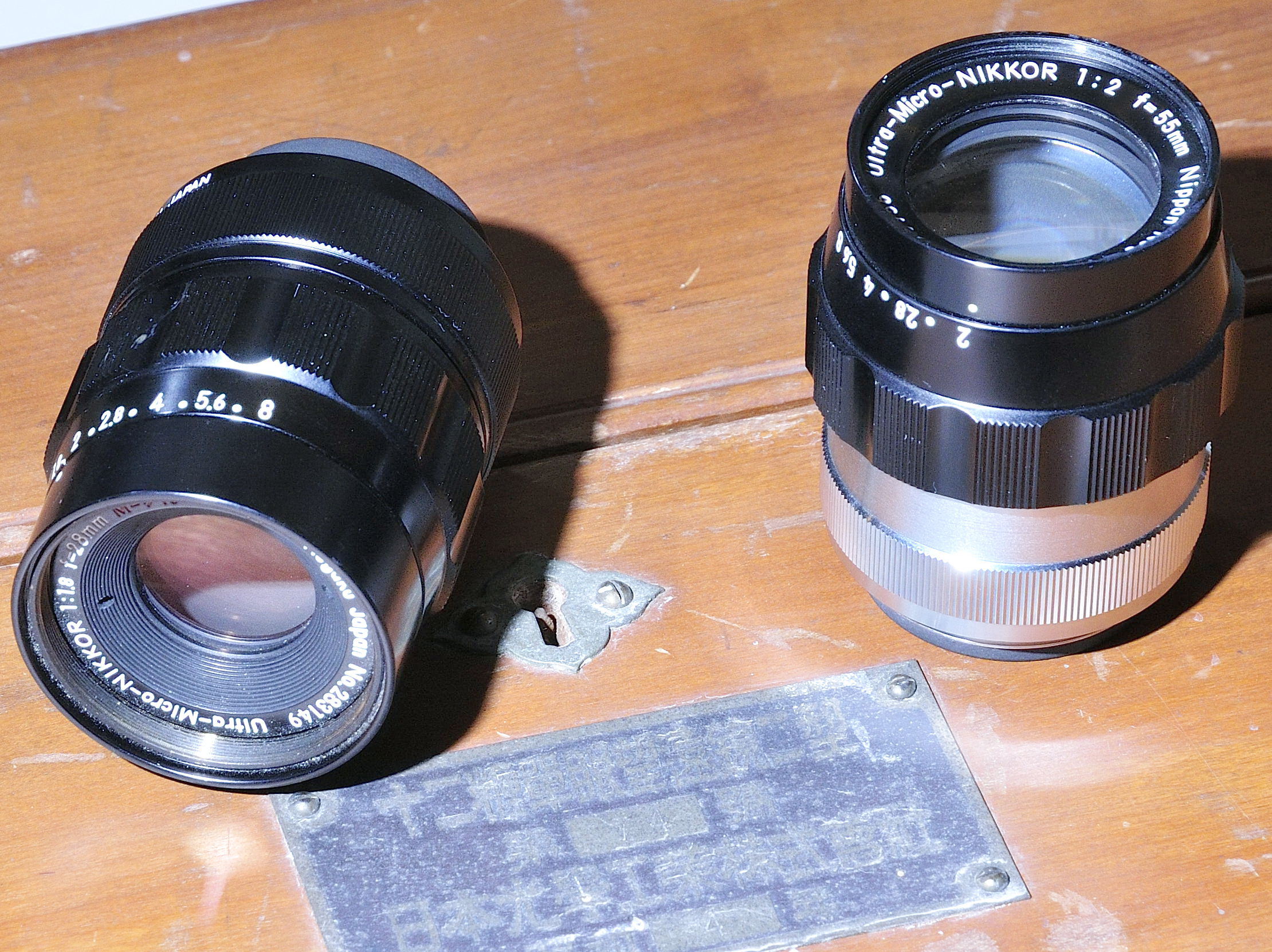Ultra-Micro-Nikkor lenses
(courtesy CS) (as the lenses in this chapter are not primarily made for photography, information is limited; a Japanese collector, Mr. Michio Akiyama, has a very informative web site dedicated to these wonderful lenses)
The advanced technology of the photographic industry is making major contributions to the mass production of miniature electronic circuits, known as IC (integrated circuits) and LSI (large-scale integrations). In fabricating IC and LSI, Ultra-Micro-Nikkor lenses are used to make negatives for printing of the circuit patterns, a technique known as photomasking. The photomask is a photographic negative bearing many minute patterns within a very small square area. Since the precision of the photomask determines the quality of the final product IC or LSI, lenses used to make photomasks must have ultra-high resolution (over 1,250 lines/mm.). Ultra-Micro-Nikkor lenses can be classified into the following 2 series: e-line Ultra-Micro-Nikkor (e-line = 546.1 mµ) this lens group is mainly used for high resolution dry plates of silver halide emulsion. all lenses are at their best when a monochromatic green light with a wavelength of 546 mµ is used.
h-line Ultra-Micro-Nikkor (h-line = 404.7 mµ) this lens has been developed for miniaturization of integrated circuits (IC), which involves reproduction of patters of line under 1 µ. The h-line lenses can also be used for g-line wavelength (g-line = 435.8 mµ) as aberration corrections have been made along the g- and h-lines. The best results can be obtained when using a lamp + filter to cut off light with a wave length shorter than 400 mµ.
Above mentioned lenses can only be used with cameras designed exclusively for reduction. It is essential that the optical axis of the lens be accurately perpendicular to both the object and photo plate planes and that it passes through the center of the object plane. Focusing procedures and the scale should be graduated so that accurate readings can be made up to 1/1,000 mm. For retaining specified resolution be sure to use only filters exclusively designed for the Ultra-Micro-Nikkor lenses.
Other special Nikkor lensesNikon Corporation did make and still is producing lenses for various other purposes than photography. As this site is dealing with photographic lenses mainly, information about special purpose lenses is limited. Just to mention a few, like the Fax-Nikkor, Ortho-Nikkor, Process-Nikkor, Regno-Nikkor and Xero-Nikkor. Do not ask your local dealer for these lenses as he probably doesn´t know about their existence. Most of these lenses are produced and sent to manufacturers for special instruments. And to be honest: the author of this site has no idea what was made when and for whom!
|
